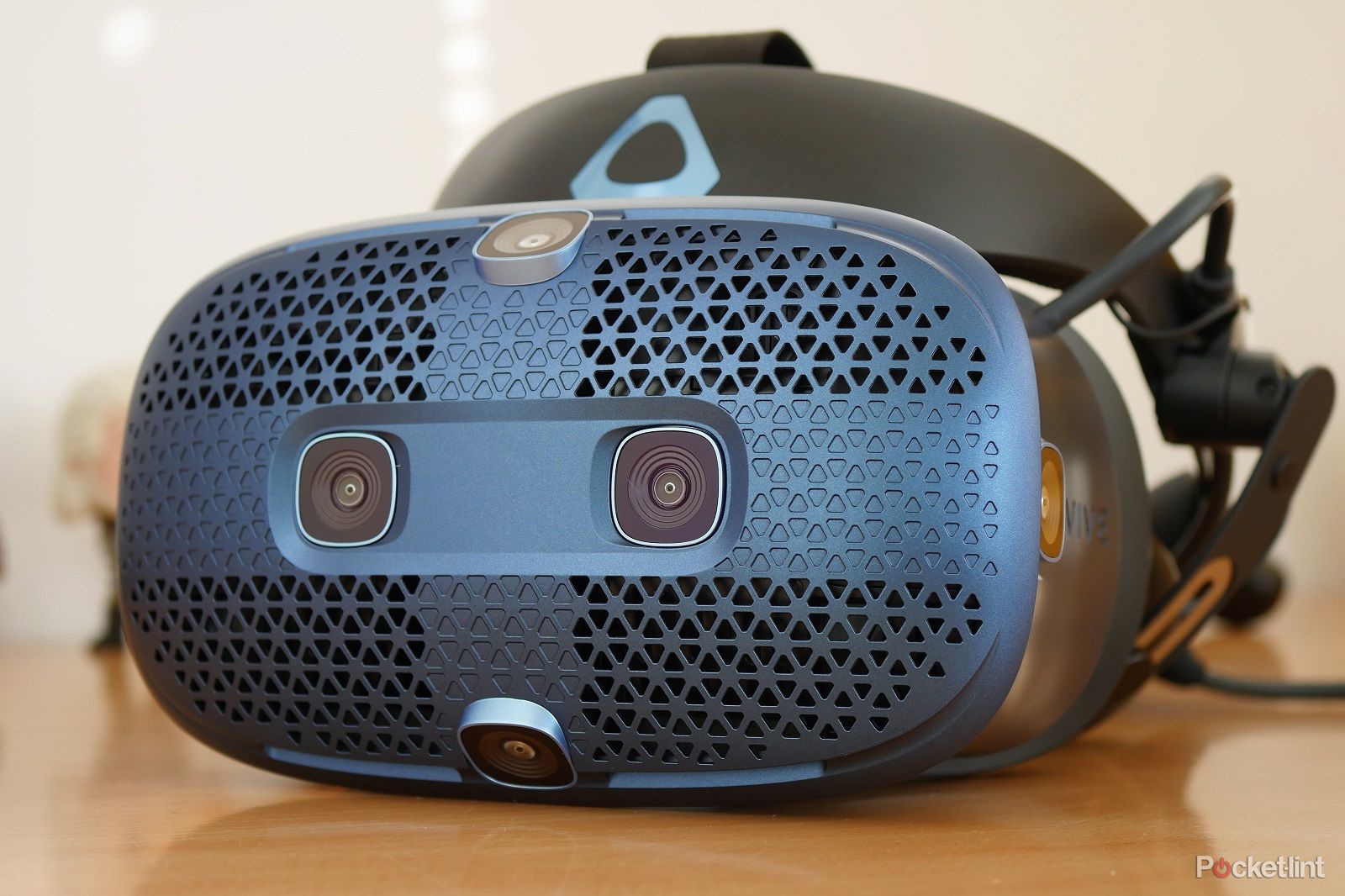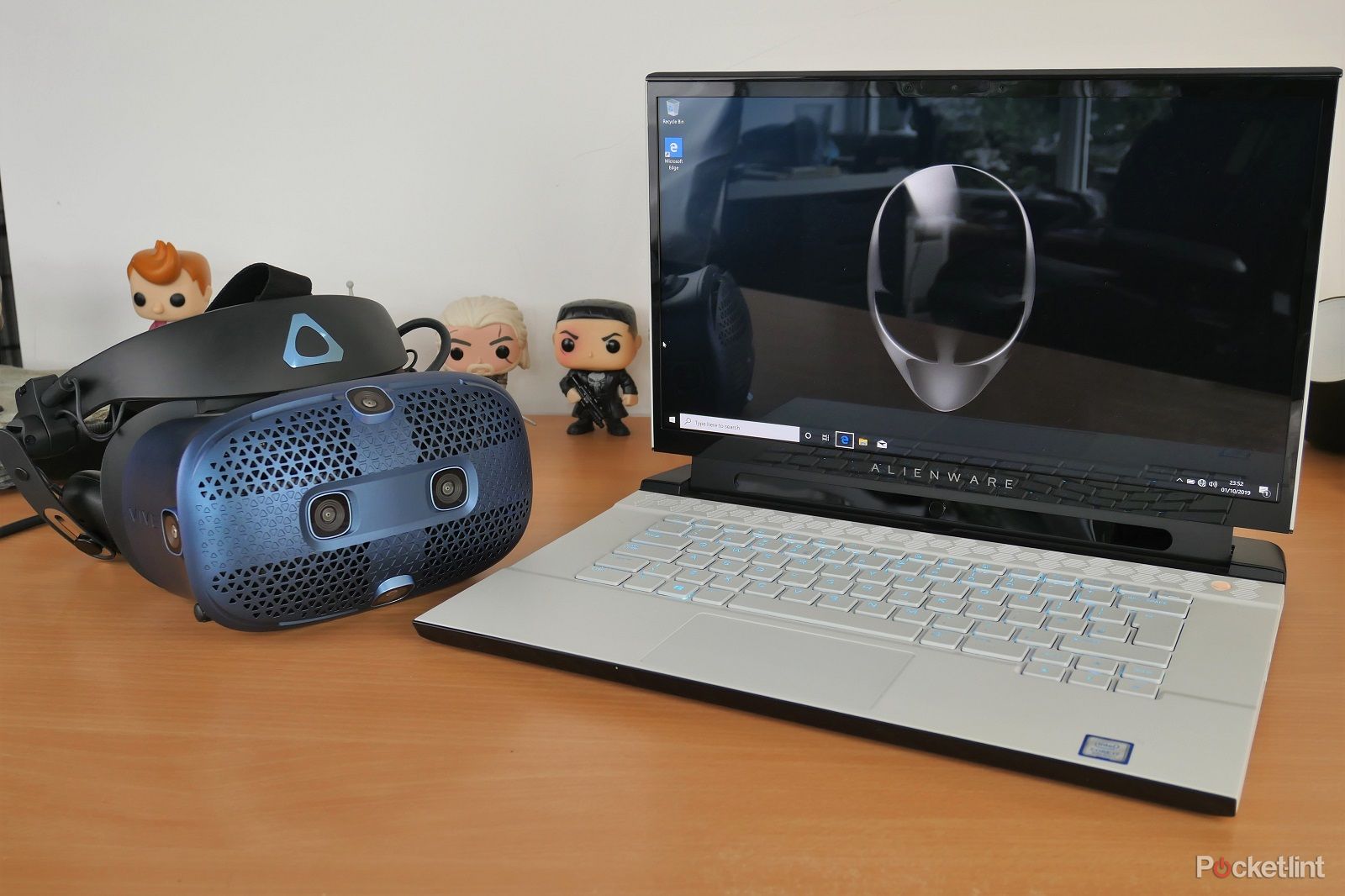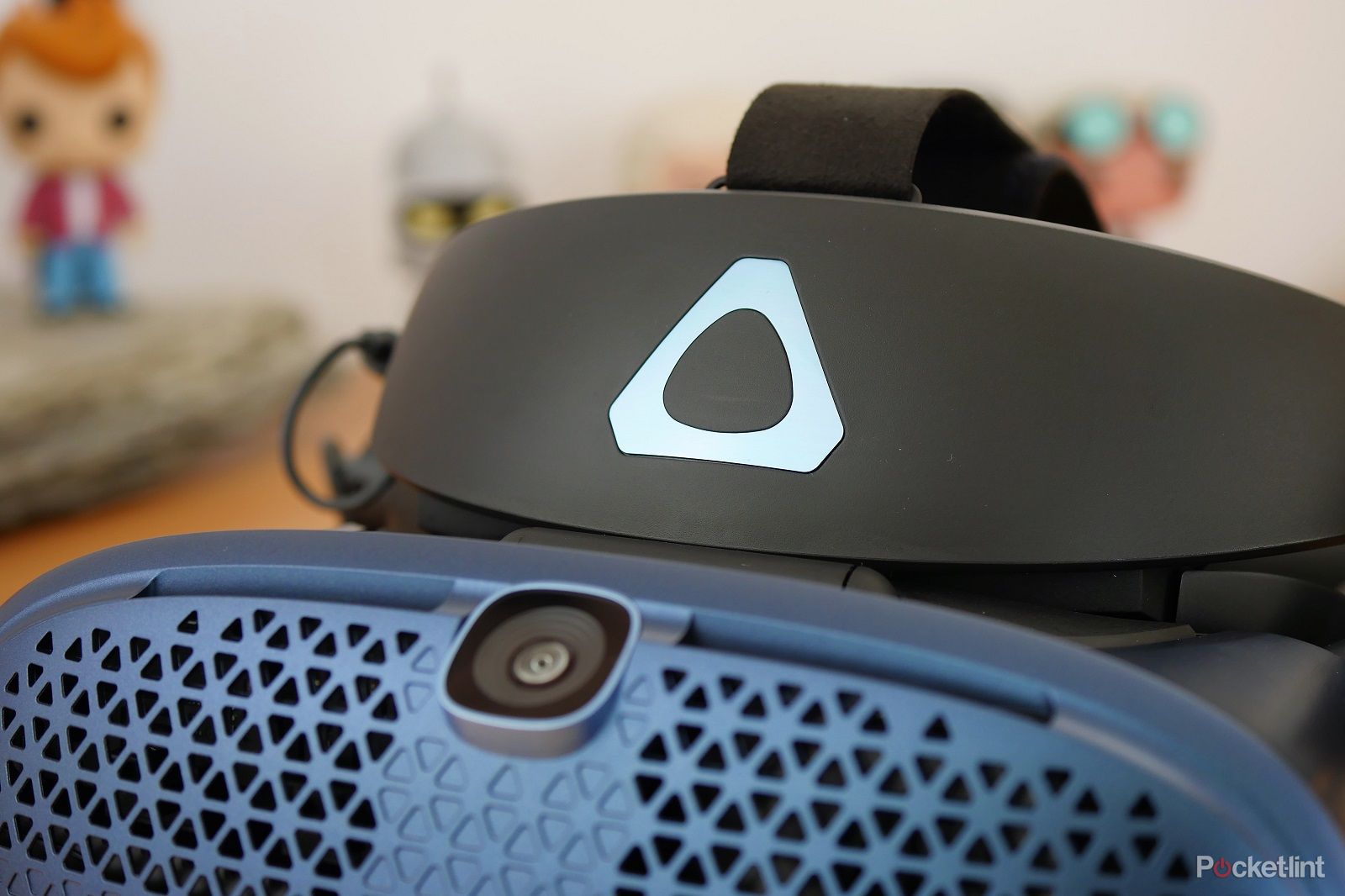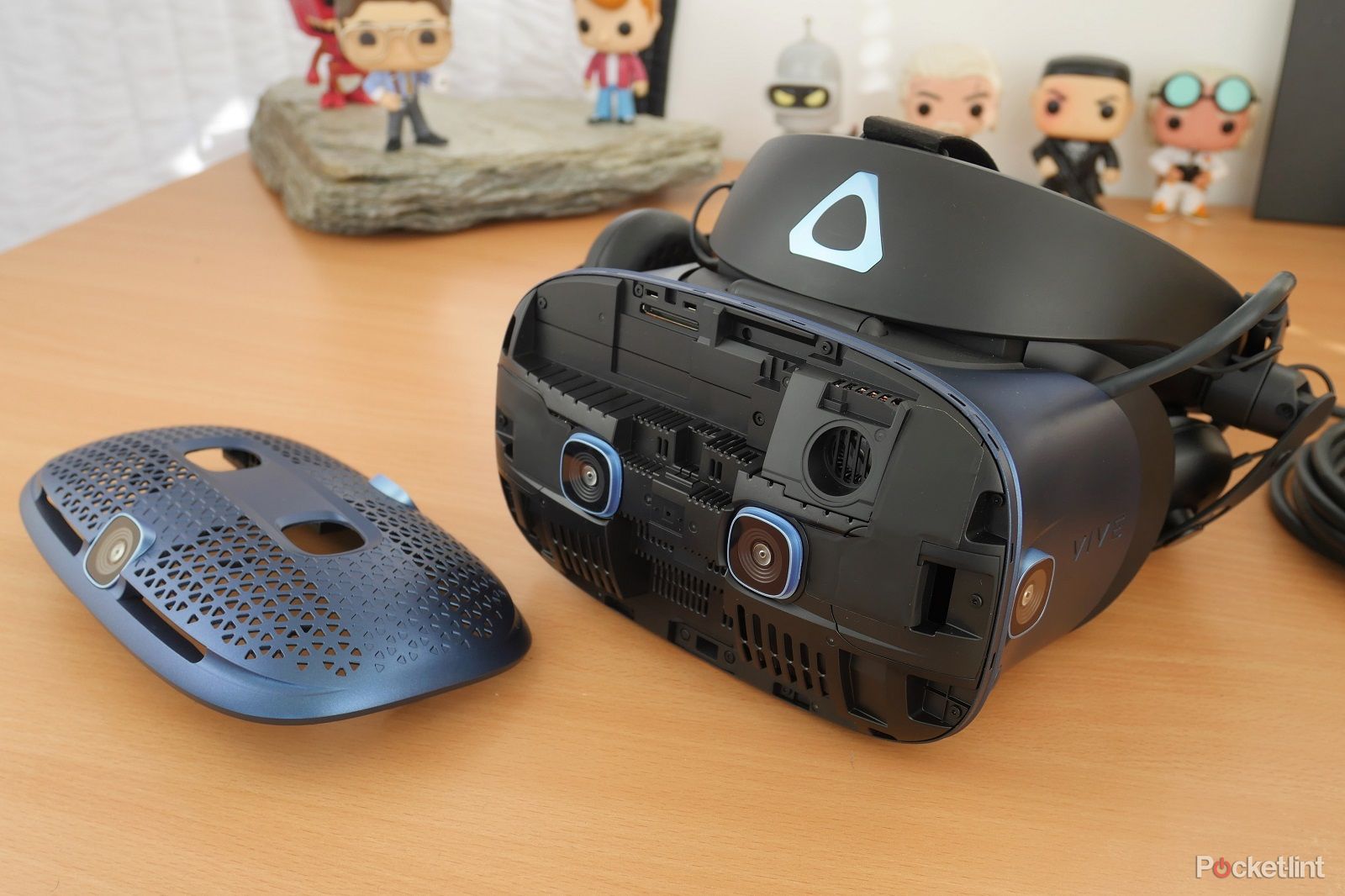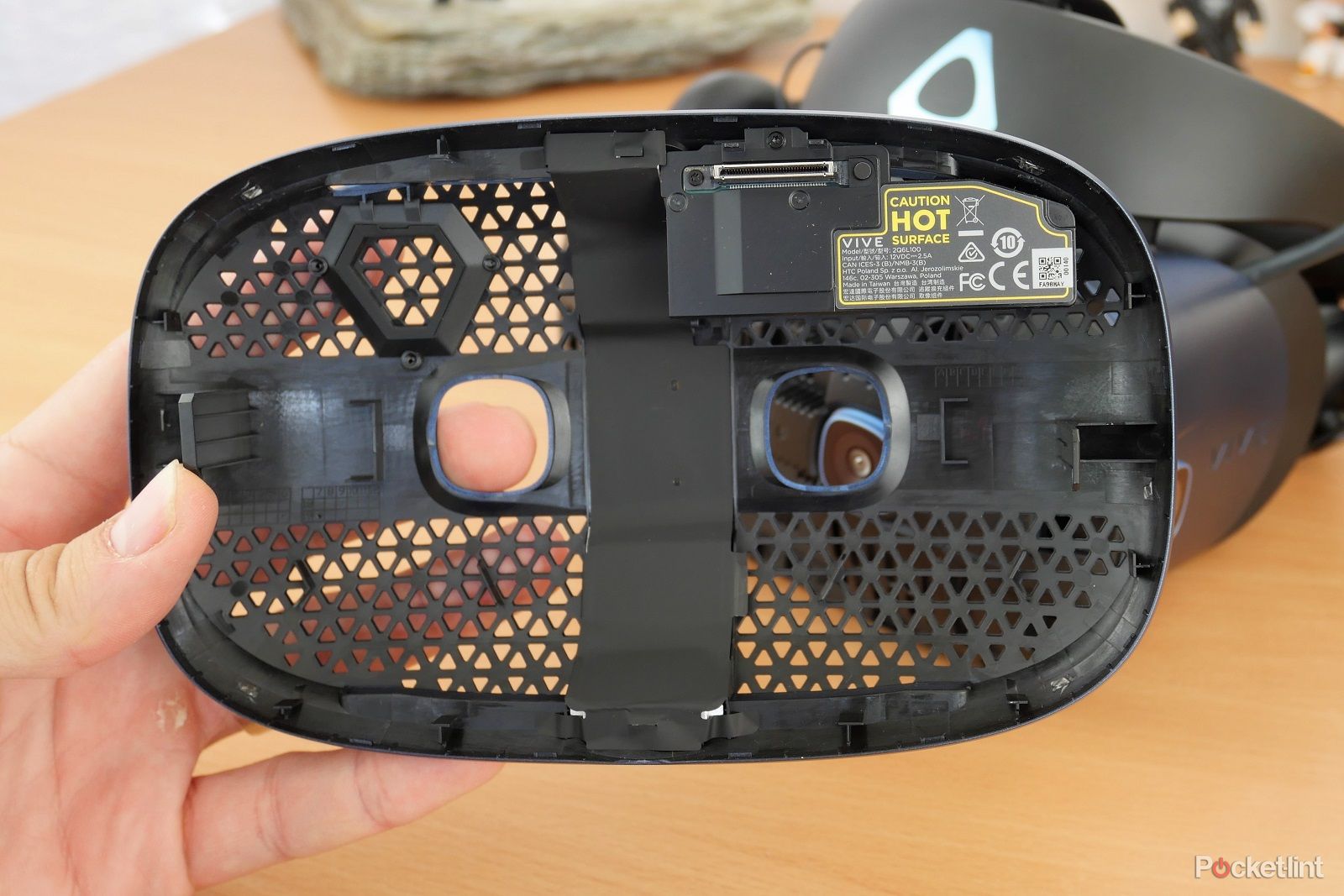We originally reviewed the Vive Cosmos back in October 2019. As we predicted at that time, the headset has since had a few improvements and updates. Not least of which is a number of software updates to improve usability and room-scale tracking.
Now HTC is also expanding the range of Cosmos headsets available - with the Cosmos Play, Cosmos Elite and Cosmos XR added to the line-up - as well as the promise of new faceplates to upgrade your Cosmos too.
On paper, the HTC Vive Cosmos still looks like a real winner. It comes with some interesting design changes, tracking and usability enhancements and an awesome-looking design too. But is this VR headset worth the money?
Our quick take
The Vive Cosmos is now easier to setup than ever before, comfortable to wear, capable thanks to high-end specs, and a great alternative to the Oculus Rift S.
Obvious highlights include: inside-out tracking, meaning no base station faff; new and improved controllers, including over-the-air firmware updates; and the modular front plate, which means potential future upgradability. It's not necessarily future-proof, though, but how many VR headsets do you know that come with the option to mod them with new gear in future?
All these various aspects - and let's not forget the integrated speakers, flip-up visor design, and improved pixel display - make the Vive Cosmos very appealing. However, it does comes with quite a hefty price tag compared to the Oculus Rift S and there are some troubling issues with tracking during the day. These might not be issues for all, but they were certainly frustrating for us.
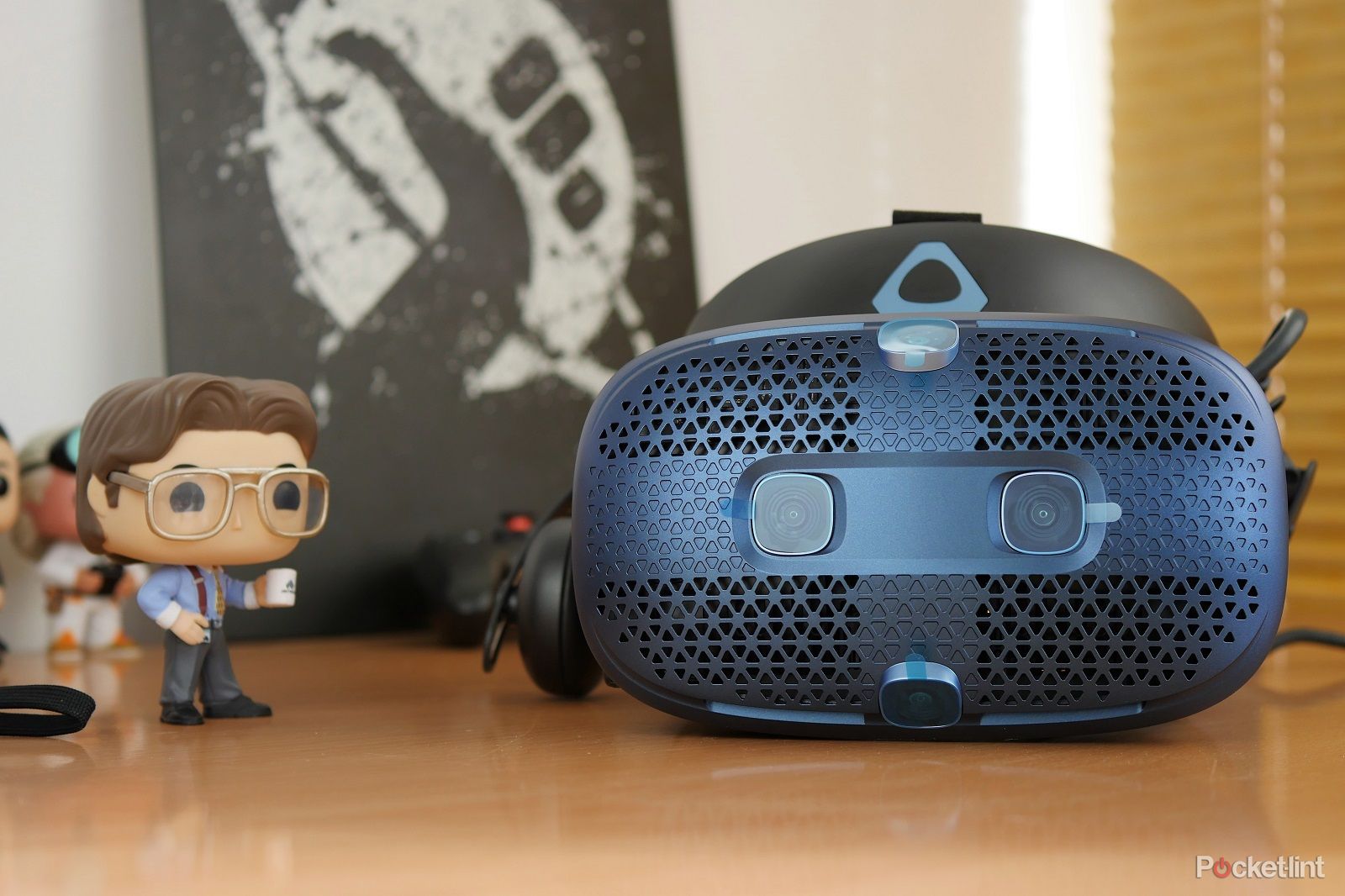
HTC Vive Cosmos - 3.5 / 5
| FOR | AGAINST |
|---|---|
|
|
HTC VIVE Cosmos
Snazzy new headset design with upgrades
- Flip-up visor similar to WMR headsets
- Dual 3.4-inch LCD diagonal screen
- 1440 x 1700 pixels per eye
- 2880 x 1700 pixels overall
- 110-degree field of view
- 90Hz refresh rate
- Built-in stereo headphones
- 3D spatial sound
- Integrated mics
- Manually adjustable IPD wheel
The Vive Cosmos is undeniably striking at first glance. It's a bold, blue headset with an interesting mesh frontage and a multi-camera setup that really makes it stand out. It's very much a Vive headset and we can see inspiration in the design of this one based on the company's previous head-mounted displays.
It also appears to take heed from other devices we've tested too. There's an adjustable head strap and flip-up visor style that's similar to the Windows Mixed Reality headsets we've seen. The all-in-one head strap design reminds us of the Deluxe Audio Strap upgrade for the original Vive but with some enhancements. However, it's not as fancy as the much sturdier-looking one on the Vive Pro and Vive Pro Eye, which is no surprise as the Vive Cosmos is cheaper than what might otherwise be seen as the HTC Vive flagship.
That's the whole point of the Vive Cosmos: to deliver a more affordable VR experience. It's hard not to draw immediate comparisons with the Oculus Rift S as there are design similarities between these two headsets. The first being the bold tracking cameras dotted around the front and edge of the headsets, which eliminates the need for external tracking sensors and makes setup a lot easier.
Like the Rift S, the Vive Cosmos has also been upgraded in other areas, the most important of which is obviously the visuals. The headset houses dual 3.4-inch LCD screens capable of displaying 1440 x 1700 pixels per eye (that's 2880 x 1700 pixels combined). According to HTC, that's an 88 per cent increase in pixel resolution over the original Vive headset. It's also a higher pixel count than the Rift S (which has a 2560 x 1440 pixel display) and even higher than the Vive Pro as well (which sports a 2800 x 1600 pixel display). Does that make the Vive Cosmos the company's new flagship VR headset? Quite possibly.
It's not just the pixel count that the Vive Cosmos impresses on though, it also sticks to that 90Hz refresh rate and 110-degree field of view. This beats the Rift S, which has been dropped to 80Hz for the new model. But it's not just specs that matter, of course, it's how it feels too.
One other thing that the Vive Cosmos might have over the Rift S is the IPD adjustment (lateral lens adjustment or repositioning). Many people complained about how the Rift S used digital IPD adjustment, the Vive Cosmos retains the same manual adjustment wheel that appeared on previous headsets. So it's easy to ensure the lenses match up with your pupil distance without much fuss.
PC spec requirements
- The recommended specs for the new HTC Vive Cosmos headset are:
- PC/laptop running Windows 10 or greater
- Graphics Card: Nvidia GTX 1060 / AMD Radeon RX 480 or greater
- CPU: Intel i5-4590 / AMD FX 8350 or greater
- Memory: 8GB of RAM
- Video Output: DisplayPort 1.2
- USB Port: 1x USB 3.0 Port
If you're not too sure about whether your machine can handle these requirements, you can run a test here.
Improved tracking
- Six camera sensors for inside-out tracking
- G-Sensor, gyroscope, IPD sensor, Hall sensor, Touch sensors
- Vive Cosmos External Tracking Mod also available
Aside from better visuals, the main draw of the Vive Cosmos might well be the inside-out tracking system - meaning you don't need additional sensors setup around the room. We really liked this on the Oculus Rift S and it's great to see HTC taking things in the same direction. The new inside-out tracking system means that the headset does all the work; six cameras are built into the front, top, sides and bottom to monitor the external space.
On the original Vive and other HTC Vive headsets, you needed at least two external tracking base stations hooked up somewhere in the room in order to track and monitor the headset, the controllers, and your movement in the play area. That system was always a bit of a faff unless you had a dedicated play space and had room to mount those base stations permanently. This is still the case with the likes of the Vive Cosmos Elite, though even that device combines inside-out tracking with external tracking base stations for more accuracy.
The standard Vive Cosmos makes use of a much more convenient inside-out tracking system that results in a much easier setup process. It also means you can theoretically plug it in and use it in more places too. All you need is a free DisplayPort output and a single USB 3.0 port on your gaming machine and you can get going with ease.
Like the other HTC headsets before it, the Vive Cosmos connects first to a Link Box and then to your gaming machine. But otherwise, it's a simple setup process that's plug and play (though you'll obviously need to run through the VR room setup as normal first).
The one downside we can see is the box does not include an adapter to help you out if you don't have a DisplayPort output on your machine. This could make gaming on a laptop tricky, as not all of them will have the right connections. Nothing the purchase of an adapter won't solve, but not a problem you'd have with the Oculus Rift S out of the box - as that one does come with the necessary adapter.
Modular faceplate points add future potential
- Modular/removable faceplate design
- Wireless upgrade available
Another design highlight to the Vive Cosmos is the modular faceplate setup. The front of the headset can be removed and replaced with other mods that are "coming in future".
The first of these mods is set to be an External Tracking Mod, which will allow you to combine the Vive Cosmos with HTC's Lighthouses for even better tracking. The Cosmos XR is also coming later this year and is said to sport a faceplate that "brings high-quality XR passthrough cameras to Vive Cosmos". This will allow for passthrough that could bring real-world objects into VR, a bit like the way mixed reality works.
We did notice one potential problem with this setup though - build quality. The faceplate comes off easily enough, but it also feels very flimsy in the hand. It seems like it would be all too easy to accidentally break it or snap a part off if you were too heavy-handed. This is likely down to a focus on keeping things lightweight and streamlined.
The front of the Vive Cosmos sports a mesh design, not just for a funky appearance but also to keep things cool. If you remove the faceplate you'll see a warning underneath about the front of the headset potentially getting very hot during gaming sessions.
Comfort and balance is also clearly an important part of the Vive Cosmos setup. The headset is lightweight and well balanced. But parts of the headset feel flimsy: the internal faceplate that sits on your face is made of a thin plastic that wobbles when you touch it. That too comes off and perhaps can be replaced in future, but it doesn't feel terribly robust.
That said, the soft cushioning on that faceplate is really well designed and soft around the face. It's also removable as it's only held on with a Velcro-like material, meaning you can clean it easily if things get a bit sweaty. The top and rear of the headband is also padded and coated in a wipe clean material that should make it more practical to keep clean.
Another upgrade option is the addition of the same wireless adapter that worked with the HTC Vive. As you'd expect, that's an additional purchase, but another way you can mod the Vive Cosmos.
Updated controllers
The controllers have had a design change that's more than just for aesthetic reasons too. Like the Oculus Touch controllers, the Vive Cosmos controllers now have loops on top. These ones also feature a bold bright light that makes it easier for the headset to track. This also doubles as a way to tell whether they're turned on and paired or not.
They're rather chunky though - quite a bit chunkier than the Oculus Touch controllers and fairly hefty in the hand. This might be a problem if you have smaller hands, but for us, we felt like they were a good size and a nice fit.
We did find that this extra size occasionally led to some issues with aching and tired hands after a long gaming session. Especially if the games you're playing involve using the grip buttons a lot.
They're also textured, meaning you're fairly unlikely to lose your grip in the middle of a good gaming session. The standard control sticks, buttons (A, B, Y, X) and side triggers are present, plus there are now two trigger buttons for your index fingers, used for easy-access control.
One thing we really like about these controllers is that firmware can be updated over the air (OTA). One of the problems we had with other Vive headsets was that each device needed to be plugged into your gaming PC separately to update the firmware - the headset, controllers, tracking base stations. That fuss is now gone, so it's much easier.
Potential problems
We've already noted a couple of potential issues with the headset: the lack of Mini DisplayPort adapter, the filmsy faceplate and mask. But there is potentially another that is worth knowing about before you purchase. The setup guide for the Vive Cosmos notes the following: "Cosmos' proprietary inside-out tracking works best in a room with patterns or colours. Tracking will work better against a pattern instead of a plain white wall."
The first time we tried the headset back in October 2019 this was especially problematic. The area we usually play in is a large room with white walls, a white ceiling and a lot of natural light from the outside world. Trying to get the Vive Cosmos setup in that room resulted in the software rejecting our efforts explaining that it could not detect the room or track the controllers. Oddly this is not a problem we had with the Rift S in the same area. As we noted at the time, this might not be a problem for everyone - pull the curtains or move with a laptop to a darker room and the issue is averted, but it's not ideal.
Things have changed a bit since then. Software updates have removed some of these niggles and reduced the irritating amount of warnings we got about it too. However, the system is still not perfect. If you're in a bright room, attempting to play during the day, then the headset may have trouble tracking the controllers. We had this issue a lot when trying to play in a space that had a lot of sunlight on it.
The controllers can be seen, but tracking is unreliable. One minute they're where you expect them to be, the next your virtual hands are nowhere to be seen - even when they're directly in front of your face in the real world. This essentially makes the headset unusable during the day unless you pull the curtains.
Previously we had the problem when gaming at night too. The headset would then nag about the room being too dark, even with the lights on. This is an issue that HTC acknowledged in a blog post and has since fixed. Now the Vive Cosmos is much more usable at night.
Another issue we had was with games. VR games we'd happily played before on Vive, Vive Pro and Rift, wouldn't work properly on the Cosmos. The controllers simply weren't recognised by the game rendering it apparently unplayable. As with the tracking, that's something that's changed - months later we're able to play games that we couldn't before.
We've seen people complaining online that the Vive Cosmos controllers suffer from terrible battery life, with some gamers getting just two hours out of them before needing fresh batteries. We managed six to eight hours just fine, but it might vary depending on the games you're playing, how much you're moving around and your environment.
HTC VIVE Cosmos
To recap
A great VR alternative to the Oculus Rift S, but the Vive's imperfect daylight tracking and a higher price tag hold it back from perfection. Software updates have vastly improved things since launch though.

